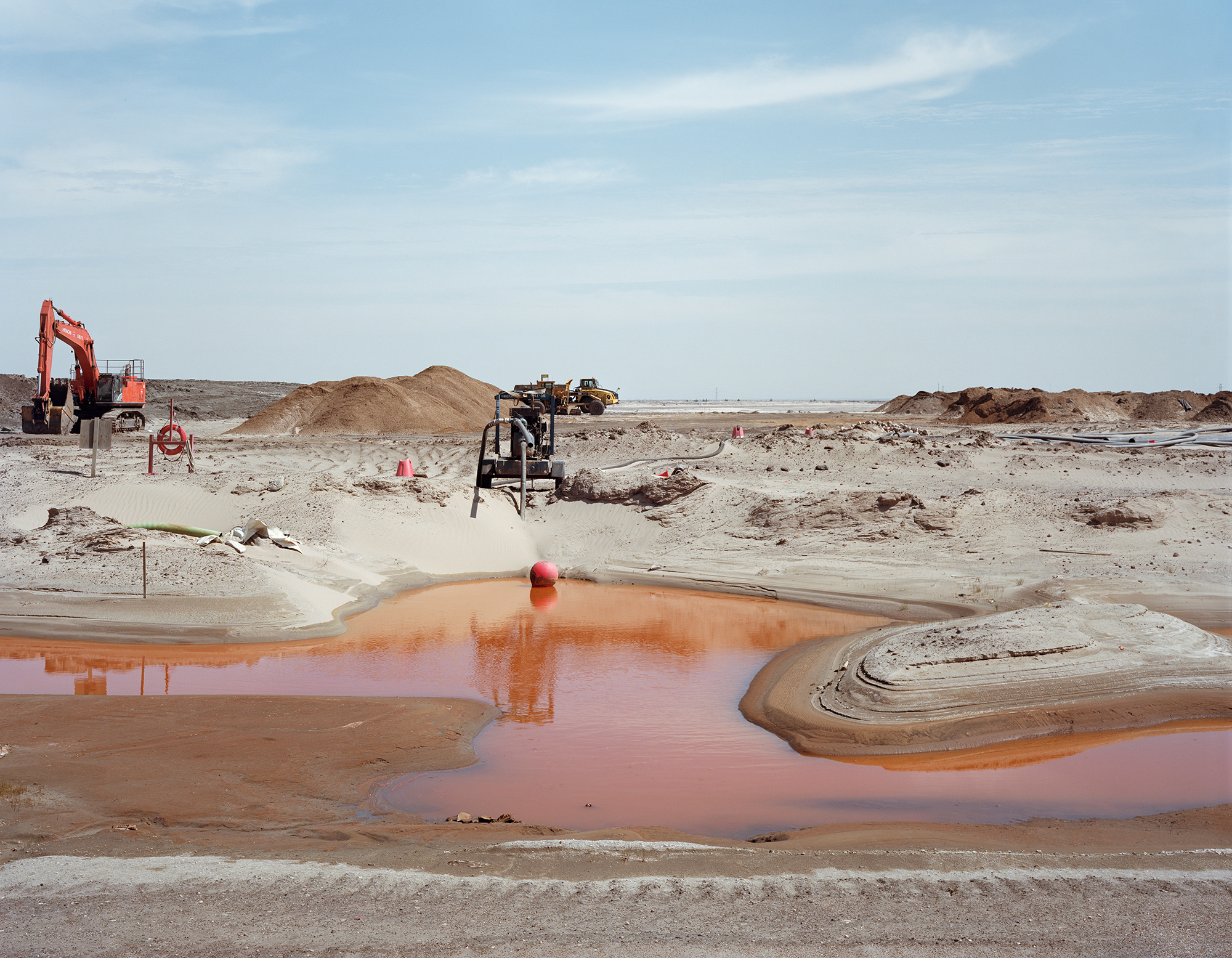by Aaron Wilder, Curator of Collections and Exhibitions at the Roswell Museum
© Roswell Daily Record
“Spaces in Between: Tailings Pond and Reclamation, North of Ft. McMurray, Alberta, Canada” by Mary Peck, 2017, Archival inkjet print. Courtesy of Mary Peck.
In last month’s “From the Vault” column, my colleague Cloe Medrano wrote about Louise Ganthiers, whose work is currently on display in the exhibition “Further into the Abstract.” Going forward, the Roswell Museum’s monthly column will have two versions. One will be our historic “From the Vault,” focusing on artists represented in and artwork within the museum’s collection. The other will be a new variation, “In View,” that focuses on a current exhibition at the museum displaying works that may or may not be from the museum’s collection. For this inaugural “In View” column, I’d like to focus on our exhibition “Mary Peck: Land Marks.”
From southeastern New Mexico in the late 1970s and mid-1980s to Chaco Canyon in northwestern New Mexico and the ranchlands of Texas in the 1990s to lands along the proposed Keystone XL Pipeline Alberta-Nebraska in 2017-2019, and back again to New Mexico during the Covid-19 pandemic, Santa Fe-based photographer Mary Peck’s exhibited works represent a limited survey of her 45 years behind the camera. While an appreciation of landscape is the dominant theme through all her work, there is an explicit interest in the marks humans leave on the land: land use, abuse, and restoration. Human presence may be largely absent in her photographs, but the human impact is always and everywhere felt.
Mary Peck was born in Minneapolis, Minnesota, in 1952 and grew up predominantly in Fort Lauderdale, Florida. Peck’s introduction to photography and early days as a photographer were extensively outlined in the essay “The Landscape of Home: 1999” by former Port Angeles Fine Arts Center Director Jake Seniuk in the 2019 book “Strait Art: An Anthology of Exhibitions from the Upper Left-Hand Corner.” He wrote, in part, “She completed her degree in photography at Utah State University (BFA in Photography and Philosophy in 1974), but was first truly inspired in seminars with master photographers, such as Henri Cartier-Bresson and Garry Winogrand, when she spent six months at the Center of the Eye in Aspen, Colorado, in 1971. There, she glimpsed both technical discipline and aesthetic focus, the mastery over both being indispensable to the making of distinctive photographs.”
Mary Peck moved to Santa Fe, New Mexico, in 1974. Rather than pursuing formal graduate study, she instead sought hands-on learning by apprenticing with experienced, well-respected landscape photographers. Eric Paddock, curator of photography at the Denver Art Museum, explained in an undated statement, “Peck refined her eye and perfected her technique while assisting the photographers Paul Caponigro (1974-1976) and Laura Gilpin (1977-1979) in Santa Fe … . Peck has practiced quietly since that time, immersing herself in long-term projects that grow from her love of nature … and her calm faith in photography’s capacity to bear witness.”
One of the more recent projects shown is the artist’s 2017-19 project “Spaces in Between.” Peck describes it on her website: “For over a decade, the Keystone XL Pipeline was planned to run from Hardisty, Alberta, to Steele City, Nebraska. Because the pipeline is a buried, hidden thing, I went to Alberta in May 2017 to see what goes on aboveground—how the land where the oil comes from is treated. I started my trip north of the Hardisty refinery in Fort McMurray, Alberta, the center of the tar sands mining industry, and spent six weeks exploring two provinces and three states, driving several thousand miles to see the landscape the 1,100-mile pipeline would go through. My trip involved looking at water along the way, staying within range — and always downstream — of the proposed pipeline. In October 2019, I returned to Montana to meet landowners whose property the pipeline would cross. Farmers, ranchers, and tribal elders were generous with their time, showing me their land and describing the impact pipeline construction and the inevitable leaks would have. When the pipeline was originally proposed in 2008, opposition along the route was strong and well organized. The project was withdrawn in 2021. The failure of this project was a great victory for the coalition of ranchers, farmers, tribes and other landowners in Montana, South Dakota and Nebraska who doggedly fought its construction.”
The exhibition “Mary Peck: Land Marks” is on display in the museum’s Graphics and Paul Horgan galleries through Jan. 19, 2025. For more information about the artist, visit marypeckstudio.com.
For more information about the Roswell Museum, visit roswellmuseum.org.